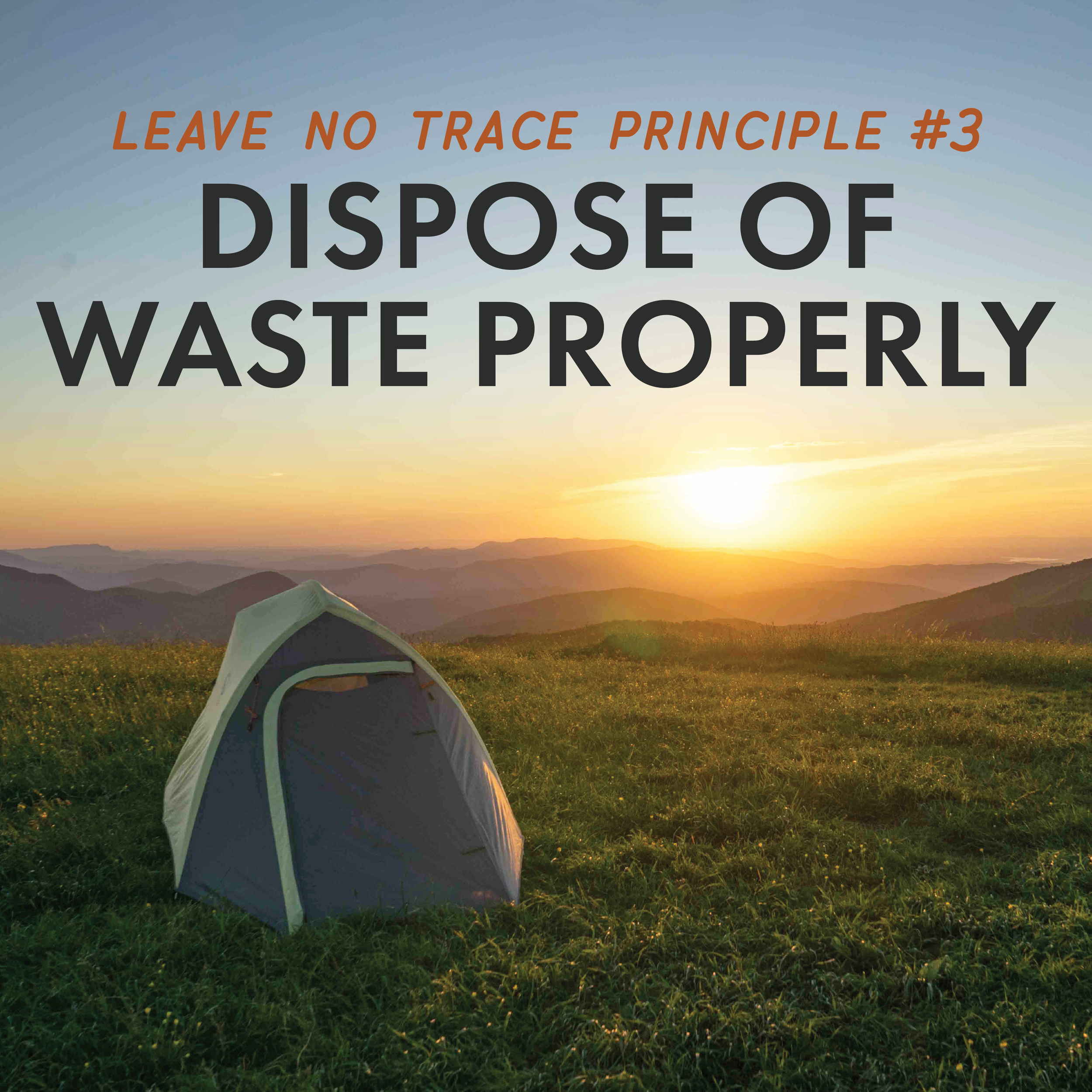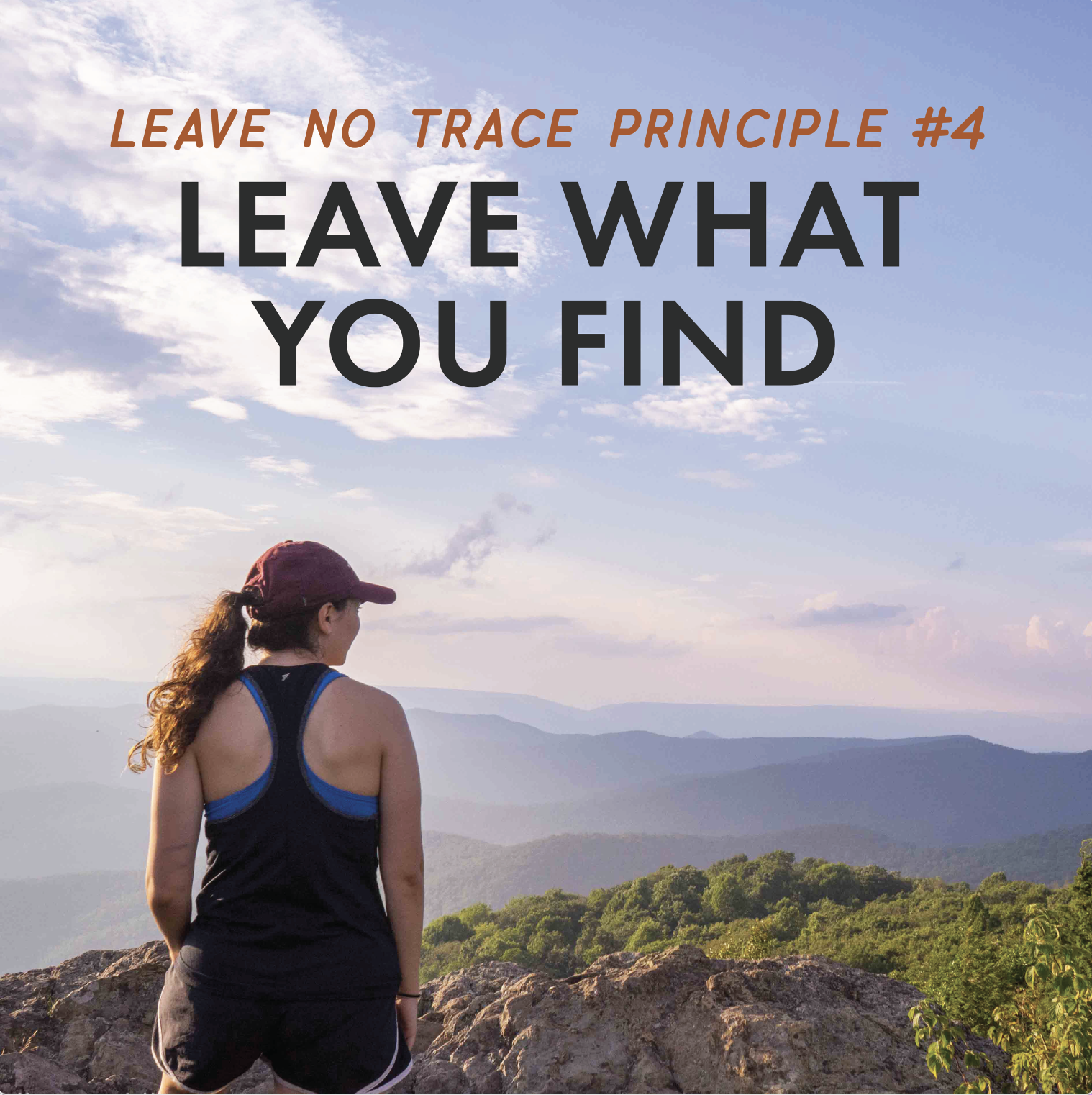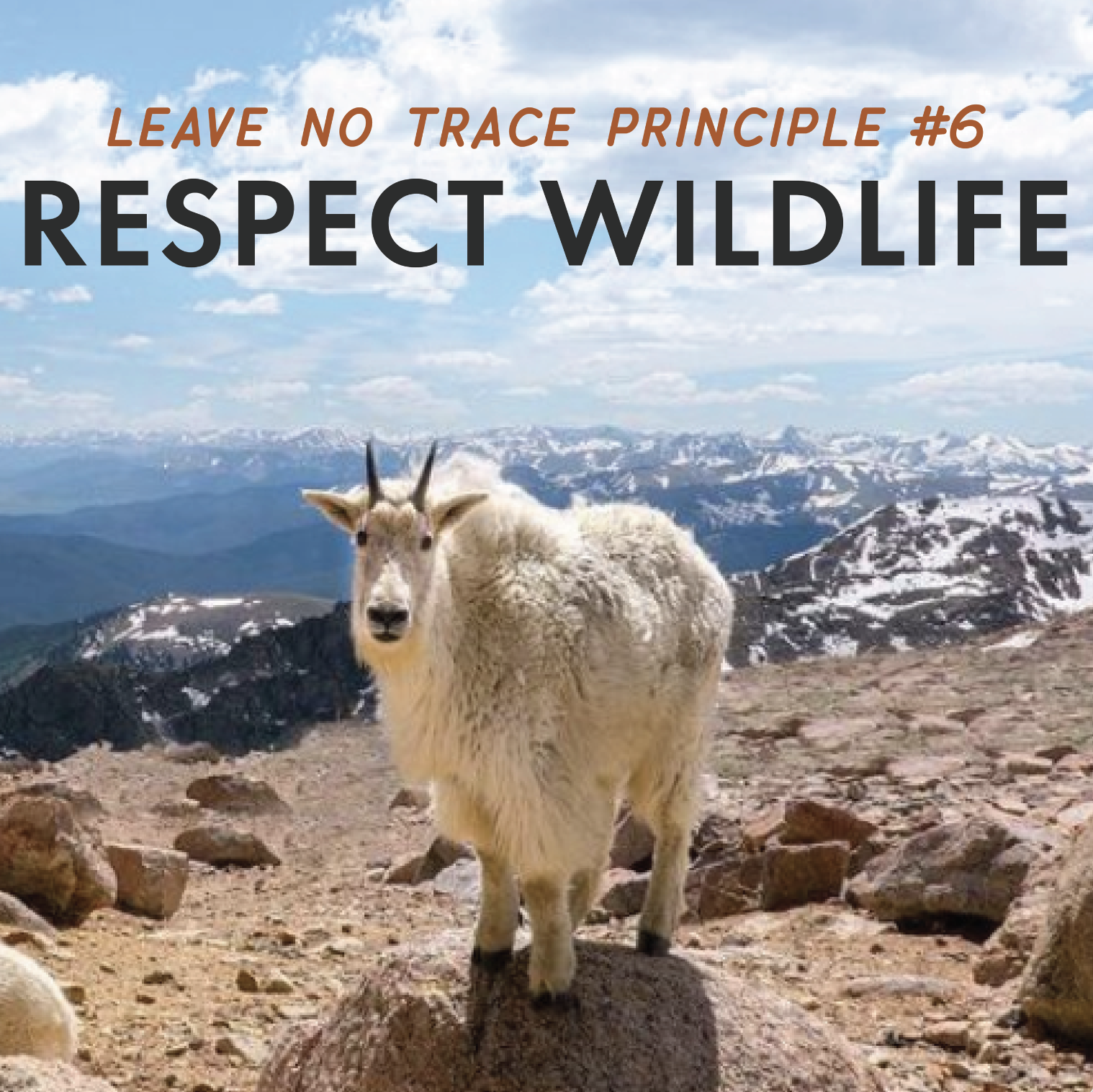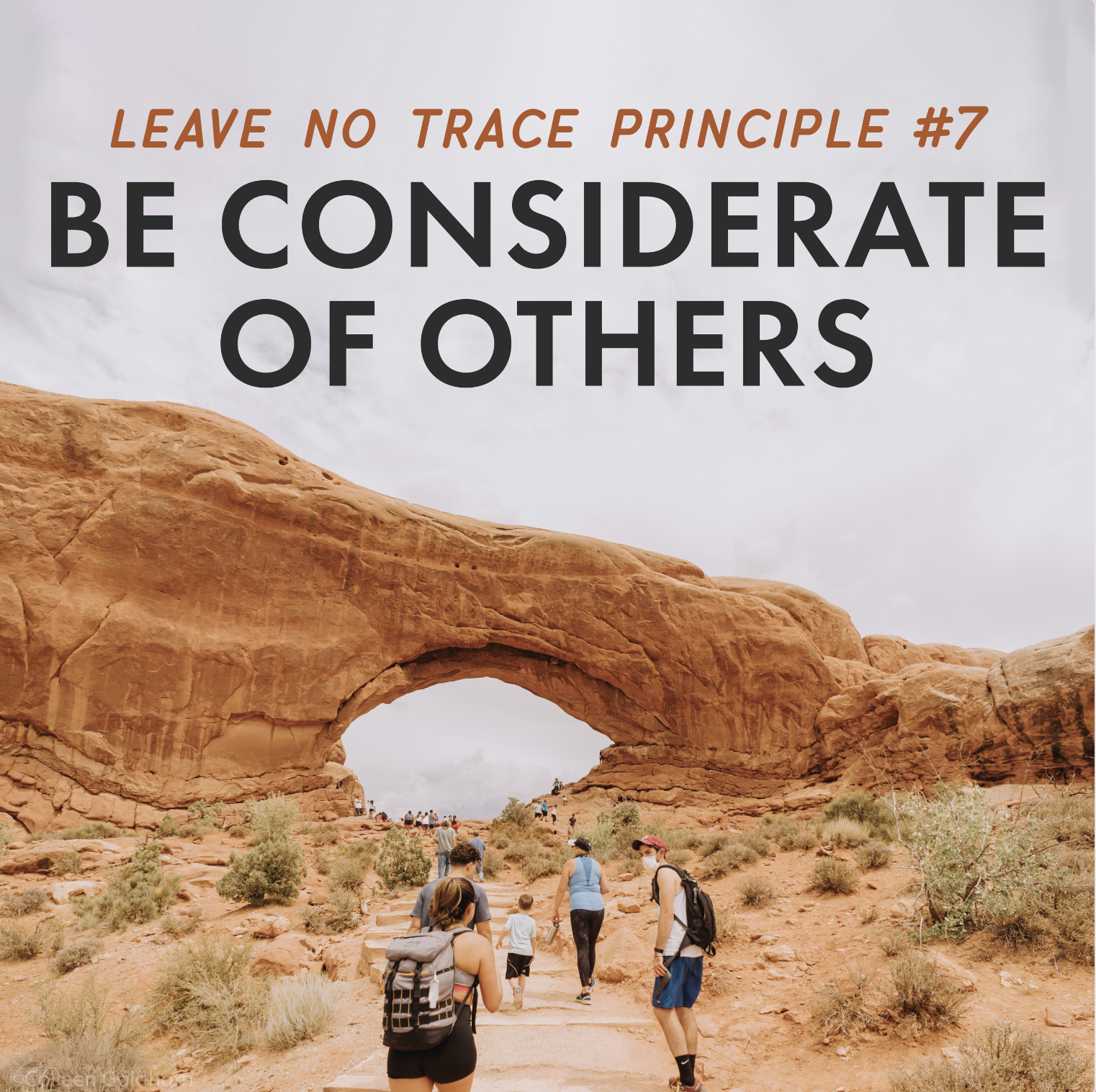The In’s & Out’s of the 7 Leave No Trace Principles
If you’ve spent some time around the outdoor world, then you’ve likely heard about the 7 Leave No Trace principles. If not, Leave No Trace (LNT) is all about leaving the trail as you found it, and preserving our natural areas for generations to come. There’s a lot that goes into following the principles, but after a little practice, they’re sure to become second nature:
#1 Plan Ahead & Prepare
Principle #1 covers all things planning your hike, and making sure you have the proper gear to recreate responsibly in nature. This principle entails properly researching the trail you will be taking, the expected weather, how long you will be out (aka, how much food, water, and supplies to bring), and properly preparing for any unexpected events that may pop up along the way.
Some easy ways to follow this principle are:
Research the type of terrain you will be on. Hikes with larger elevation gain will be more strenuous and require you to bring more food and water.
Bring a map or guidebook, as well as a compass. It’s also recommended to bring along proper knowledge on how to use said compass. Having these items will ensure you are able to find your way back in the event you get off course
Research the area you will be hiking in. Are afternoon rain storms common? If so, bring a rain jacket. Are temperatures known to drop as you gain elevation on your route? If so, pack a warm jacket and gloves. Knowing what you will be getting into helps keep you safe, and prevents you from taking unnecessary risks that may damage the ecosystem.
Lastly, wear the proper gear for your hike! Wearing boots on a muddy trail (for example) allows you to walk through the mud and water, and prevents you from unintentionally widening the trail.
#2 Travel and Camp on Durable Surfaces
Principle #2 is all about minimizing your erosion impacts while out in nature, and traveling in places that will cause the least amount of hard to the environment.
Some easy ways to follow this principle are:
The easiest way to follow this guideline? STAY ON THE TRAIL. That means not cutting switchbacks, or taking “short cuts”.
Little things (such as walking through mud or puddles in the middle of the trail), help keep “social trails” from forming, and keep our wild areas prestige and erosion free!
Fun Fact – sand, snow, and rock slabs are all considered surfaces durable for camping and hiking! Dirt, mud, flooded areas, and grass are unfortunately not as durable and more subject to the harmful efforts of erosion.
#3 Dispose of Waste Properly
Principle #3 helps keep our trails and campsites free of trash and toxic human waste – but there’s a little more that goes into it than just picking up your trash.
Some easy ways to follow this principle are:
Always carry a small trash bag (a ziplock is perfect!) in your pack. You can use this to properly pack out your lunch, toilet paper, gum, or food scraps.
Do not throw apple cores or orange peels on the forest floor or in the water. The only time this is acceptable is if you pick an apple, for example, directly from a tree, and leave the core directly below that tree. These items are often not native to the environment where they are thrown, and are not part of a healthy diet for most animals.
Always go to the bathroom at least 200 feet away from trails, water, camp spots. Then, completely bury your waste in a 6 in hole. It is also wise to pack out your toilet paper in your trash bag as well.
If you're really feeling like a good LNT steward, pick up some trash you see lying on the trail! Mother nature will be extremely appreciative.
#4 Leave What You Find
This principle focuses on leaving nature just as beautiful as you found it, so that the next person to come down the trail can have the same experience as you. When possible, this principle asks hikers to go one step further and "leave it better" than they found it, which can include picking up trash, food scraps, and any other object left on trail by humans
Some easy ways to follow this principle are:
Do not pick wildflowers on the trail. An easy way to make sense of this rule is that if every hiker that came down the trail picked a flower, then there would very quickly be nothing left for others to enjoy.
Strive to leave all areas as you found them – this includes not digging trenches for tents, building new campfire rings, or constructing lean-to's from logs. When appropriate, dismantling cairns (that are NOT for the purpose of trail marking), incorrectly built fire rings, and other man made structures in nature can be helpful to restoring the natural beauty of an area.
Remember that great campsites are found, not made. If you have to trample plants or move logs out of the way, then consider looking for a better site.
Leave antlers, cool rocks, and all animals where you found them. Remember the phrase "take only pictures, leave only footprints" when considering if it's acceptable to bring a souvenir home from your hike.
#5 Minimize Campfire Impacts
This principle helps prevent the long term damage of massive wildfires, and small scale campfires alike. Although scenic, campfires can actually do more harm than good to an area. The most important question becomes “do I need to build a fire?”. Start by asking yourself the below questions:
Do I need the fire for warmth or cooking?
Is there a fire ban where I am camping?
Is there enough wood laying around that I don’t have to kill living trees, and my wood collecting would not be noticeable?
If you decide to have a fire after answering the above questions, be sure to always
Buy or collect wood close to where you are camping as to not bring in invasive species that live in firewood
Use small pieces of wood to ensure you don’t leave charred pieces behind after your fire
If you do choose to have a fire, some additional ways to follow this principle are:
Always use a fire ring when available. If not, avoid making a fire next to rock outcrops where the black scars can remain for years
Always douse your fire with water and dirt until it is cool enough to touch.
#6 Respect Wildlife
This principle covers everything from not getting too close to animals, to respecting their habitats. A few easy tips for following this principle are below:
Some easy ways to follow this principle are:
Never touch, get close to, feed, or pick up animals. Yes, this even includes cute little squirrels and marmots that come up to you begging for snacks. Feeding animals gets them accustomed to humans, which will likely end up being the cause of their death later down the line.
Quick movements and loud noises are stressful to animals, and can disturb their hunting. Travel quietly, and try not to scare animals as you walk by (of course, there is an exception to this rule in grizzly bear country).
Pick up all food, trash, and waste from the trail. This will ensure that water sources stay clean, and animals don’t invest harmful items.
#7 Be Considerate To Others
You can almost think of this principal of being similar to The Golden Rule – in short, treat others on the trail as you would like to be treated.
Some easy ways to follow this principle are:
Not playing loud music through a speaker while hiking or camping
Keep your dog and other pets under control – leash your dog if they are known to run up and jump on other hikers
Camp, cook, and go to the bathroom away from drinking sources
Step aside to let faster groups pass you on the trail. Remember – uphill always has the right of way on a single track trail. If you are traveling downhill and you run into a group hiking towards you, always step to the side to let them pass.
And, of course, pick up all trash
More info about the 7 principles can be found at lnt.org. Happy hiking!








